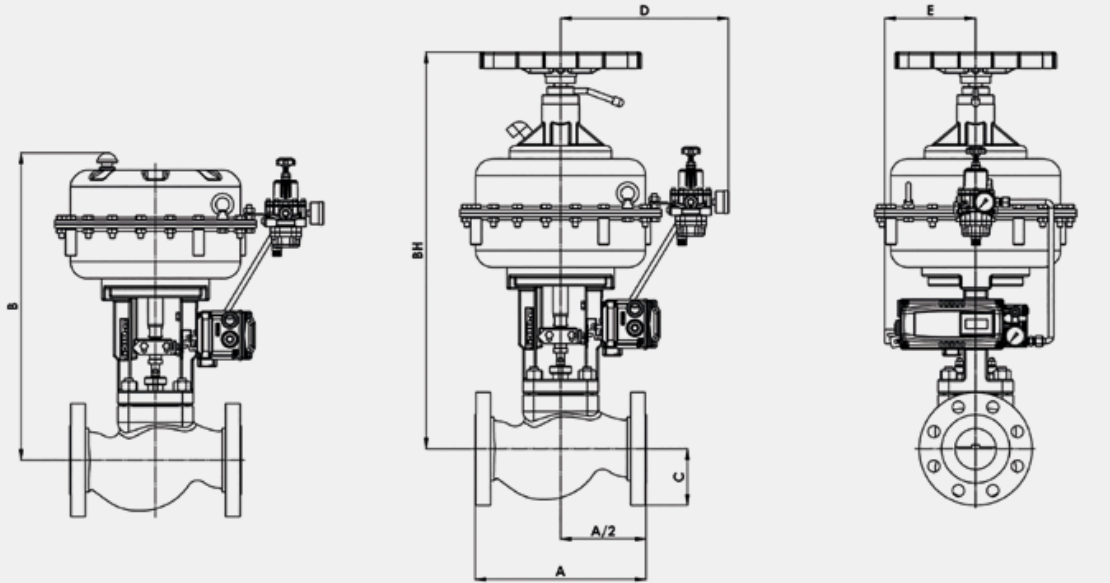Control valves are critical components in industrial processes, designed to regulate fluid flow, pressure, and temperature in various applications. With advancements in control valve technology, modern valves are engineered to meet the demanding requirements of fossil power plants, oil and gas operations, and other industrial settings. These valves are particularly suited for semi-severe service applications that require anti-cavitation or low-noise trim. High-pressure drops in process conditions often lead to challenges such as erosion, noise, and vibration, which can compromise process control and overall plant performance. To address these issues, control valves are designed with robust features that ensure reliable operation and longevity.
Typical applications for control valves include heater drains, condensate water systems, steam services, spray water systems, level control, pressure regulation, and flow control. Their versatility and adaptability make them indispensable in maintaining efficient and safe operations across a wide range of industries.

The control valve’s design incorporates the latest technological advancements, ensuring flexibility, durability, and ease of maintenance. Its rigid construction minimizes plug vibration, providing stable performance throughout its operational travel. The control valve body is designed to accommodate various trim types, allowing customization to meet specific application needs. Additionally, the screwed seat design simplifies repair and trim replacement, reducing downtime and maintenance costs.
Key design features include:
This design enhances hysteresis and dead band performance, ensuring precise control and responsiveness.
The valve features a single P-port and drilled-hole cage, which are optimized for efficient flow control and noise reduction.
The valve is equipped with fail-to-close and fail-to-open options, ensuring safety and reliability in the event of air supply loss.
All internal components can be easily inspected and serviced by removing the bonnet, simplifying maintenance procedures.
A comprehensive range of accessories is available to meet specific operational requirements, including positioners, limit switches, and solenoid valves.

Control valves offer numerous advantages that make them ideal for general and specialized applications. These benefits include:
The valves are available with shutoff classes ranging from ANSI IV to VI, ensuring leak-free performance and meeting stringent application requirements.
A wide selection of actuation methods, including pneumatic, electric, and top-mounted hand-wheel, provides flexibility in operation and control.
The top-entry design allows for quick inspection and trim changes, minimizing downtime and maintenance costs.
The ability to switch between reduced and full-sized capacity trims or between linear and equal percentage characteristics with a simple plug change enhances adaptability.
The availability of various body and trim materials ensures compatibility with corrosive fluids and sour gas services, with full compliance to NACE (National Association of Corrosion Engineers) standards.
Control valves are utilized in a wide array of industrial applications, each with unique requirements and challenges. Some of the most common applications include:
Control valves regulate the flow of condensate from heaters, ensuring efficient heat transfer and preventing water hammer.
These valves maintain optimal water levels in condensate systems, enhancing the efficiency of steam cycles.
Control valves manage steam flow and pressure in boilers, turbines, and other steam-based systems, ensuring safe and efficient operation.
In cooling and desuperheating applications, control valves precisely regulate spray water flow to maintain desired temperatures.
These valves are used in tanks and vessels to maintain consistent fluid levels, preventing overflow or dry running.
Control valves stabilize system pressure, protecting equipment and ensuring process stability.
By modulating fluid flow, these valves optimize process efficiency and product quality.
Modern control valves are equipped with advanced features that enhance their performance and reliability. These innovations include:
Designed to minimize cavitation, this trim reduces noise, vibration, and erosion, extending the valve’s lifespan.
Ideal for applications requiring quiet operation, this trim reduces noise levels without compromising flow control.
These devices provide precise control and real-time feedback, improving accuracy and responsiveness.
Integrated sensors and communication capabilities enable remote monitoring and diagnostics, facilitating predictive maintenance and reducing downtime.
The choice of materials for control valves is critical to their performance and durability. Depending on the application, valves can be constructed from materials such as carbon steel, stainless steel, alloy steels, and exotic alloys like Hastelloy and Inconel. These materials are selected based on their resistance to corrosion, erosion, and high temperatures, ensuring reliable operation in harsh environments.
Compliance with industry standards is another essential aspect of control valve design. Valves used in sour gas or corrosive fluid services must adhere to NACE MR0175/ISO 15156 standards, which specify material requirements for sulfide stress cracking resistance. Additionally, control valves are designed to meet ANSI, ASME, and API standards, ensuring safety, reliability, and interoperability.
Proper installation and maintenance are crucial to maximizing the performance and lifespan of control valves. Key considerations include:
Ensuring the valve is appropriately sized for the application prevents issues such as excessive pressure drop, cavitation, and noise.
Misalignment during installation can lead to premature wear and operational issues. Careful alignment of the valve and associated piping is essential.
Routine inspections help identify and address potential problems before they escalate, reducing the risk of unexpected failures.
Replacing worn components, lubricating moving parts, and cleaning internal surfaces are essential maintenance tasks that ensure optimal performance.
Control valves are indispensable components in a wide range of industrial applications, offering precise flow, pressure, and temperature control. With advancements in design, materials, and technology, modern control valves provide enhanced performance, reliability, and ease of maintenance. Their ability to handle demanding conditions, such as high-pressure drops, corrosive fluids, and sour gas services, makes them a preferred choice for fossil power plants, oil and gas operations, and other industries.
By selecting the appropriate control valve for specific applications and adhering to proper installation and maintenance practices, operators can ensure efficient and safe process control, ultimately improving plant performance and reducing operational costs. As technology continues to evolve, control valves will remain at the forefront of industrial innovation, driving efficiency and sustainability across various sectors.
